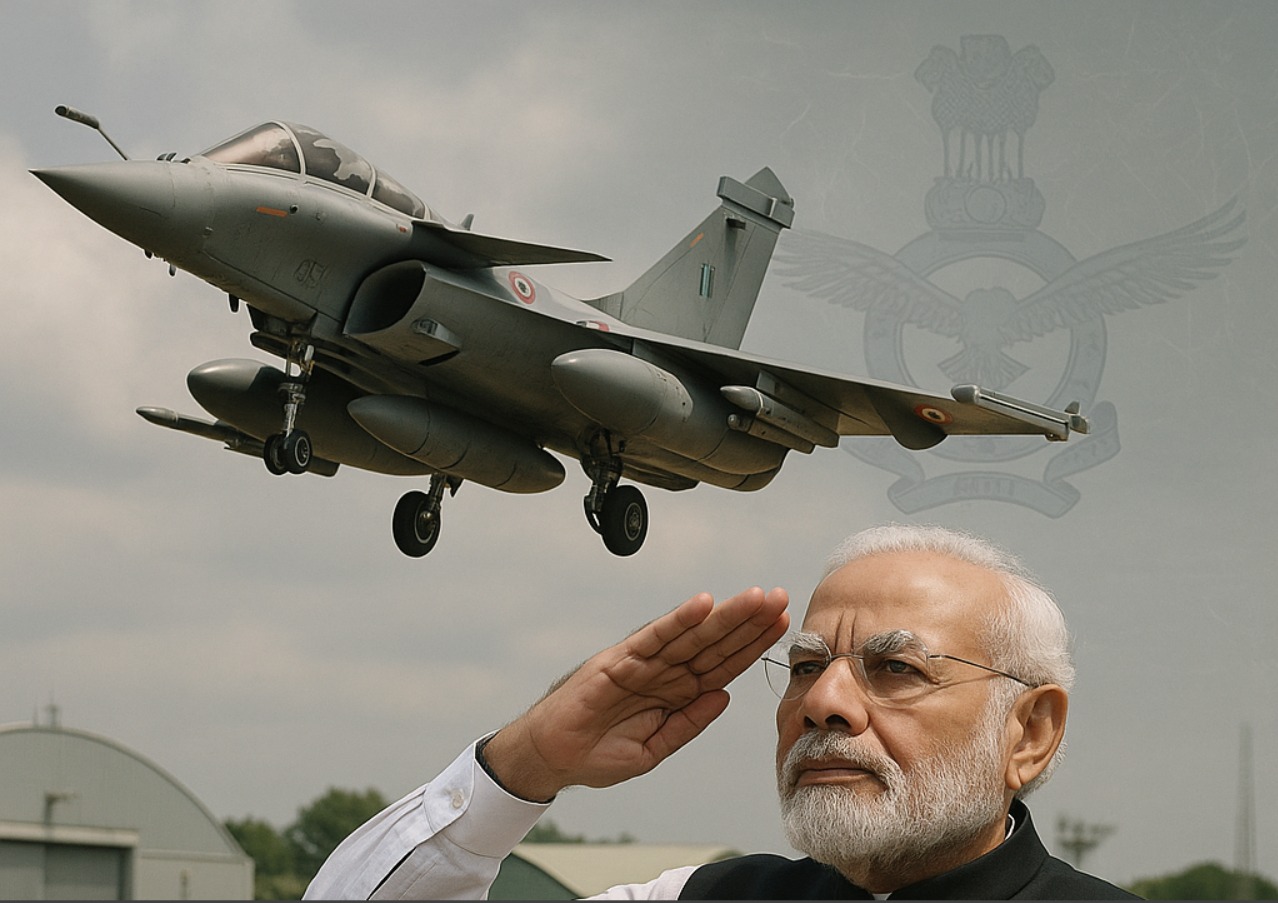Introduction: From Controversy to Capability
India’s purchase of Rafale combat aircraft from France was one of the most controversial and important defence purchase decisions in recent times. Initially caught in political scandals and courtroom battles, the Rafale deal is today commonly seen as a game-changing initiative for the Indian Air Force (IAF). With Operation SINDOOR, these advanced jets have been completely inducted, significantly increasing India’s air combat capability and strategic position.
In this article, we analyze the history, controversies, technical characteristics, and their effect on the national security of India by operational deployment under Operation SINDOOR.
The Background: India’s Need for Next-Generation Fighter Jets
By the early 2000s, the Indian Air Force was confronted with a serious deficiency in operational warplanes. The majority of its squadrons were flying aging MiG-21s, and there was a pressing requirement for sophisticated multi-role fighter planes.
In 2007, the Indian government floated a global tender to buy 126 Medium Multi-Role Combat Aircraft (MMRCA). The agreement entailed:
- Buying 18 aircraft in fly-away condition from a foreign supplier
- Producing the remaining 108 aircraft indigenously through Hindustan Aeronautics Limited (HAL) with complete transfer of technology
Six international aerospace majors bid, including Boeing (F/A-18), Lockheed Martin (F-16), Saab (Gripen), Eurofighter, MiG, and Dassault Aviation (Rafale).
Rafale Wins the MMRCA Competition
Following intense field trials and assessments, Dassault Aviation’s Rafale was declared the L1 bidder in 2012. Rafale’s advantage lay in its:
- Twin-engine flexibility
- Multirole versatility (air dominance, ground strike, reconnaissance)
- Sophisticated active electronically scanned radar
- Meteor and Scalp missile systems
Price negotiations, technology transfer, and modality of production discussions with HAL followed soon after.
Strategic Shift: Modi Government’s 2015 Direct Purchase Deal
In April 2015, while on an official trip to Paris, Prime Minister Narendra Modi made a new offer: India would purchase 36 Rafale fighter jets in a fly-away condition directly from the French government. This was a deviation from the original 126-aircraft tender, which was subsequently officially cancelled.
Reasons for the Deviation:
- Extended delays in HAL negotiations
- HAL’s failure to achieve production and cost targets
- Declining combat capability of the Indian Air Force
- Requirement for rapid, high-quality induction of sophisticated aircraft
The fresh agreement, inked in September 2016, was valued at €7.87 billion and comprised weapon systems, simulators, spare parts, and maintenance support.
Offset Clause: Enhancing the ‘Make in India’ Drive
One of the most significant aspects of the Rafale contract was the 50% offset clause, whereby French defence companies were required to invest a minimum of half the contract amount into the Indian defence and aerospace industry.
The purpose of this clause was to:
- Establish indigenous manufacturing capacity
- Enable technology and knowledge transfer
- Create employment within the defence industry
Dassault Reliance Aerospace Ltd (DRAL)
In 2016, Dassault Aviation partnered with Reliance Defence to create DRAL. The alliance intended to produce components of the Falcon 2000 business jet and other defence platforms in Nagpur, Maharashtra.
The Rafale Controversy: Political Firestorm and Legal Challenges
Even in the face of strategic necessities, the Rafale deal soon became politically charged. In 2018, various petitions were presented in the Supreme Court of India, expressing concern regarding:
- Alleged favoritism towards Reliance Defence, bypassing HAL
- Lack of transparency in pricing and terms
- Whether PM Modi’s announcement had Cabinet Committee on Security (CCS) approval
- Claimed loss to the exchequer compared to earlier negotiations
Supreme Court Verdict (2018)
The Court examined the process, pricing, and offset selection, and ultimately dismissed all petitions, citing no irregularities in the procurement process and no evidence of corruption.
Rafale Induction and Operation SINDOOR
The initial batch of Rafale aircraft came in July 2020 at Ambala Air Force Station and were officially inducted into the 17 Squadron “Golden Arrows.” With time, all 36 aircraft were delivered, split across Ambala (North India) and Hasimara (Eastern frontier near China border).
Operation SINDOOR: India’s Air Power Reinforcement
Under Operation SINDOOR, Rafale jets are a key component of India’s contemporary defence operations. This operation is centered around:
- Strategic preparedness along India’s borders
- Sophisticated reconnaissance and precision strikes
- Real-time coordination in tri-service operations (Army, Navy, Air Force)
Technological Superiority of Rafale Jets
Rafale introduces cutting-edge capabilities that hugely surpass India’s earlier fleet:
Key Features:
- Meteor Missiles: Beyond Visual Range (BVR) air-to-air missiles with more than 150 km range
- Scalp Cruise Missiles: Air-to-ground deep strike capability with pinpoint precision
- SPECTRA Electronic Warfare Suite: Radar detection and jamming protection
- Thales RBE2 AESA Radar: Multi-target tracking in all weather conditions
- Helmet-Mounted Display & Smart Cockpit
These capabilities increase India’s air superiority, survivability, and first-strike capability.
Strategic Implications for India
The induction of Rafale is more than a tactical addition. It changes the regional power dynamics, particularly in the wake of increasing Chinese and Pakistani threats.
Strategic Advantages:
- Rapid mobilization and deep-strike capability
- Nuclear weapon delivery capability
- Air superiority in both Western and Eastern zones
- Interoperability with friendly air forces (France, UAE, Egypt, etc.)
Conclusion: Rafale as a Game-Changer in Indian Defence
The Rafale fighter aircraft deal, once tainted by severe political and judicial scrutiny, has now emerged as a game-changer for Indian defence infrastructure. As part of Operation SINDOOR, these aircraft have enhanced India’s capability to deter aggression, project power, and secure sovereignty.
With an emphasis on technology, speed, accuracy, and autonomy, the Rafale purchase is a milestone in India’s path to becoming a contemporary military power.
AUTHOR
Pragya Jakhar, a second-year B.A. LL.B. (Hons.) student at Lovely Professional University, with a growing specialization in constitutional and human rights law. She is an emerging legal writer with a
strong interest in contemporary legal developments, judicial reforms, and access to justice. Pragya has authored several insightful articles analyzing critical legal issues and court judgments, reflecting her commitment to research-driven scholarship. With a keen understanding of both theoretical and procedural dimensions of law, she continues to contribute meaningfully to academic and policy discourse in the legal field.


One thought on “Rafale Fighter Jet Deal and Operation SINDOOR: Know everything about it.”